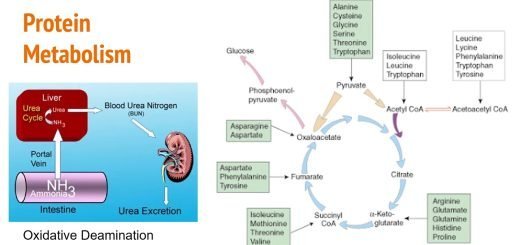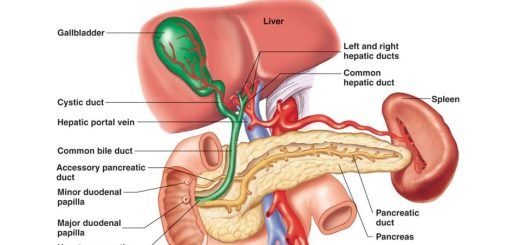Diencephalon function, Thalamus, Metathalamus, Hypothalamus, Epithalamus and Subthalamus
Diencephalon is located between the telencephalon and the midbrain, It is known as the ‘tweenbrain in older literature, It consists of structures that are on either side of the third ventricle, including the thalamus, the hypothalamus, the epithalamus, and the subthalamus, The thalamus has many functions including relaying sensory and motor signals to the cerebral cortex and regulating consciousness, sleep, and alertness.
Diencephalon
The diencephalon includes:
- Thalamus,
- Metathalamus,
- Hypothalamus,
- Epithalamus,
- Subthalamus.
The thalamus
It is an oval mass of grey matter situated on each side of the 3rd ventricle and reaching some distance caudal to that cavity. It is about 4 cm long and 1.5 cm broad. The thalamus has:
- Two ends: anterior and posterior.
- Four surfaces: superior, inferior, medial, and lateral.
Relations of the thalamus
The anterior end is narrow and it lies near the median plane forming the posterior boundary of the interventricular foramen.
Posterior end: it is expanded and called pulvinar. it is directed dorsally and laterally.
Superior surface: It is related to the following structures from lateral to medial:
- Body of caudate nucleus.
- Stria terminalis.
- Thalamostriate vein.
- Body of lateral ventricle.
- Choroid plexus.
- Fornix.
Inferior surface: related to the subthalamus, hypothalamus, and tegmentum of the midbrain.
The lateral surface is related to the posterior limb of the internal capsule which separates it from the lentiform nucleus.
Medial surface: this surface is related to the cavity of the 3rd ventricle, forming the lateral boundary of this ventricle, The upper edge of this surface is related to a band of white matter called stria medullaris thalami (or stria habenularis), This surface is connected to the corresponding surface of the opposite thalamus by a band of grey matter called interthalamic adhesion.
Internal structure of the thalamus
The thalamus is chiefly a grey matter, but its superior surface is covered by a layer of white matter and its lateral surface is also covered by a similar layer of white matter called the external medullary lamina.
Internally, the thalamic grey matter is incompletely divided by a vertical sheet of white matter called the internal medullary lamina, which splits antero-superiorly in a Y-shaped manner, Accordingly, the main mass of the thalamus is divided into:
- Anterior part: lying between the anterior two limbs of the Y- shaped internal medullary lamina.
- Medial part: lying medial to the internal medullary lamina.
- The lateral part is lying lateral to the internal medullary lamina, This large part is further subdivided into dorsolateral and ventromedial divisions, This part is continuous posteriorly with the pulvinar.
Thalamic nuclei
I. Specific group of nuclei:
A. Anterior group.
B. Medial group: the nucleus medialis dorsalis (mediodorsal or dorsomedial).
C. Lateral group:
- Nucleus lateralis dorsalis (lateral dorsal “LD” nucleus).
- Nucleus lateralis posterior (lateral posterior “LP” nucleus).
- Pulvinar nucleus (P” nucleus).
D. Ventral group:
- Nucleus ventralis anterior (ventral anterior “VA” nucleus).
- Nucleus ventralis intermedius (“VI” nucleus) = ventral lateral nucleus (“VL nucleus).
- Nucleus ventralis posterior which is further subdivided into:
- Nucleus ventralis posterior medialis (ventral posterior medial “VPM” nucleus).
- Nucleus ventralis posterior lateralis (ventral posterior lateral “VPL” nucleus).
II. Non-specific group of nuclei: includes the midline nuclei, intra-laminar and reticular nuclei.
Thalamic radiations
They represent the different nerve fibers connecting the thalamus to the cerebral cortex. They include:
- Anterior thalamic radiation: connects the frontal lobe with the medial and anterior nuclei.
- Superior thalamic radiation: connects the ventral and lateral nuclei with the precentral and postcentral gyri.
- Posterior thalamic radiation: connects the pulvinar with the occipital lobe, Also, it includes the connection between the lateral geniculate body and the occipital lobe (optic radiation).
- Inferior thalamic radiation: connects the pulvinar with the temporal lobe, Also, it includes the connection between the medial geniculate body and the temporal lobe (auditory radiation).
Blood supply of the thalamus
It is supplied mainly by branches from posterior communicating, posterior cerebral, posterior choroidal, and basilar arteries.
The metathalamus
The metathalamus consists of the medial and lateral geniculate bodies which lie on the inferior surface of the pulvinar of the thalamus. From the physiological point of view both the thalamus and metathalamus are considered one structure.
Medial geniculate body
It is a small ovoid mass of grey matter situated just lateral to the superior colliculus of the midbrain, and it is connected with the inferior colliculus by the brachium of the inferior colliculus, It is a relay nucleus in the pathway of hearing:
Lateral lemniscus → medial geniculate body → auditory radiation → auditory area.
Lateral geniculate body
It is a small avoid mass of grey matter situated lateral to the medial geniculate body, It is connected with the optic tract (in front), and the brachium of the superior colliculus (behind), It receives most of the fibers of the optic tract carrying visual impulses, It/sends efferent fibers in the form of optic radiation to the visual area.
Optic tract → lateral geniculate body → optic radiation → visual area.
The hypothalamus
Position & relations: The hypothalamus includes the structures in the anterior wall and floor of the 3rd ventricle; the hypothalamic nuclei are classified into:
I. Anterior region:
- Preoptic nucleus.
- Supraoptic nucleus.
- Suprachiasmatic nucleus.
- Anterior nucleus.
- Paraventricular nucleus.
II. Tuberal (or intermediate) region:
- Infundibular (or arcuate) nucleus.
- Ventromedial nucleus.
- Dorsomedial nucleus.
III. Mammillary (or posterior) region:
- Posterior nucleus.
- Medial mammillary nucleus.
- Lateral mammillary nucleus.
- Intermediate mammillary nucleus.
IV. Lateral zone or lateral nucleus.
Epithalamus
It consists of:
- Pineal body (gland).
- Habenular nuclei.
- Stria medullaris thalami.
- Habenular commissure.
- Posterior commissure.
Subthalamus
The subthalamus is a part of the diencephalon situated just above the tegmentum of the midbrain, between it and the ventral nuclei of the thalamus.
Medially, it is related to the vertical part of the hypothalamus and laterally, it is related to the junctional zone between the internal capsule and the cerebral peduncle of the midbrain.
The subthalamus contains mainly the subthalamic nucleus. It is a large nucleus that lies above the substantia nigra and medial to the internal capsule.
Reticular formation, Reticular activating system & Types of EEG waves & Phases of sleep
Upper and lower motor neurons lesion, Stages of complete spinal cord transection
Function and Physiology of Thalamus, hypothalamus & Limbic system













